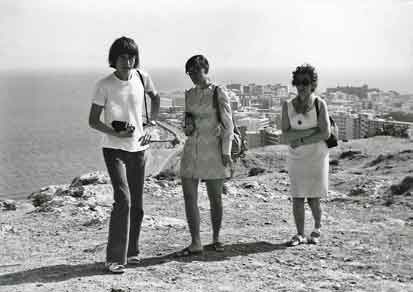
Welcome to Rhodes, the capital of the Dodecanese,
an island which is ideal not only for those who want
to relax but also for those looking for an action-packed
holiday! With its bright green hills, rich green valleys
and uninterrupted line of golden beaches,
Rhodes is truly a blessed place. Add in the excellent
facilities for tourism, the island’s special blend of
cosmopolitan and traditional, and numerous cultural
and archaeological sites and you’ve got the perfect
holiday destination.
http://www.visitgreece.gr/en/greek_islands/rhodes
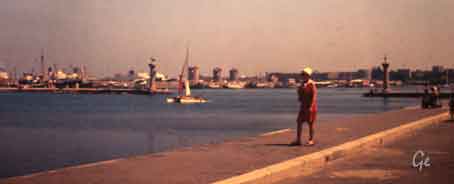
A stroll around Mandráki, the small marina
with the Rhodian deer statues at its entrance
and the surrounding windmills, is an
experience not to be missed.
http://www.visitgreece.gr/en/greek_islands/rhodes
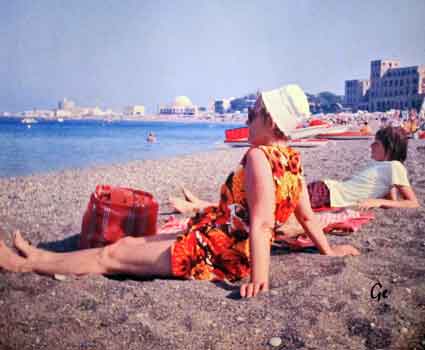
Mor og Jan Erik på en av strendene i Rhodos by.
Its history begins with the siege of Demetrios Poliorketes,
successor of Alexander the Great, in 305 BC. When
Demetrios was defeated, he abandoned all his siege
machinery on Rhodes. The Rhodians decided to express
their pride by building a triumphal statue of their
favourite god, Helios. The task was assigned to the
sculptor Chares of Lindos, a pupil of Lysippos himself,
and twelve years (from 304 to 292 BC) were needed
to complete it.
From its building to its destruction lies a time span of
merely 56 years. Yet the Colossus earned a place in the
famous list of Wonders. "But even lying on the ground,
it is a marvel", said Pliny the Elder. The Colossus of
Rhodes was not only a gigantic statue. It was a symbol
of unity of the people who inhabited
that beautiful Mediterranean island of Rhodes.
A strong earthquake hit Rhodes at around 226 BC.
The city was badly damaged, and the Colossus was
broken at its weakest point - the knee. The Rhodians
received an immediate offer from Ptolemy III
Eurgetes of Egypt to cover all restoration costs for
the toppled monument. However, an oracle was
consulted and forbade the re-erection. Ptolemy's
offer was declined.
http://www.rhodesguide.com/rhodes/colossus_rhodes.php
 Kolossen på Rhodos, slik den ble tenkt på en gravering fra 1500-tallet ved Martin Heemskerck i hans serie av verdens syv underverker. Tekst og bilde fra: https://no.wikipedia.org/wiki/ Kolossen_p%C3%A5_Rhodos |
 Kolossen på Rhodos, som sannsynligvis ikke sto med en fot på begge sider av havnen som vist her. Tekst og bilde fra: https://no.wikipedia.org/wiki/ Kolossen_p%C3%A5_Rhodos |
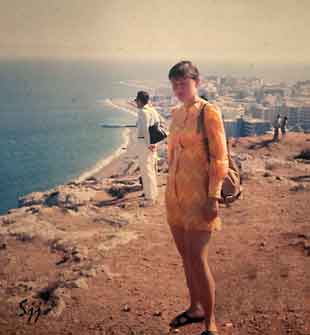
Utsikt mot Rhodos by
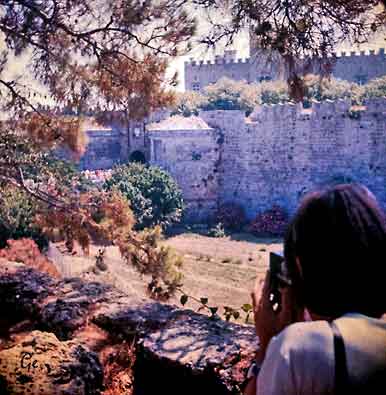
Mot Rhodos gamleby
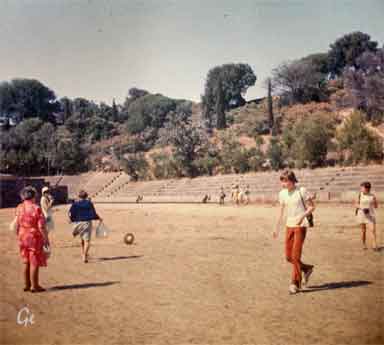

Lindos
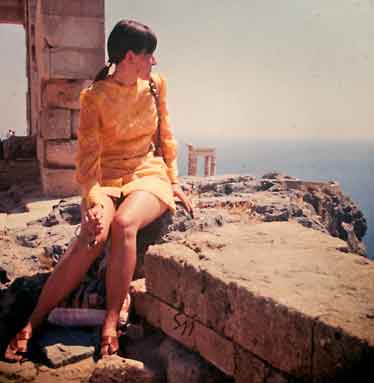
Lindos
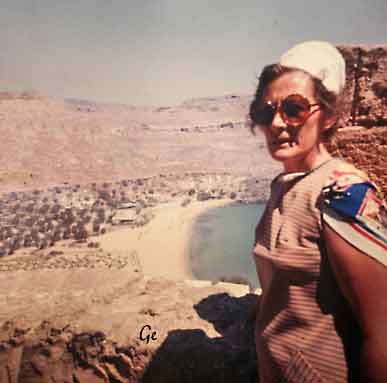
Lindos
Above the modern town rises the acropolis of Lindos,
a natural citadel which was fortified successively by the
Greeks, the Romans, the Byzantines, the Knights of
St John and the Ottomans. This makes the site difficult
to excavate and interpret archaeologically.
The acropolis has views of the surrounding harbours
and coastline.
On the acropolis of Lindos today parts of the following
buildings may still be seen:
The Doric Temple of Athena Lindia, dating from about
300 BC, built on the site of an earlier temple. Inside the
temple is the table of offerings and the base of the cult
statue of Athena.
- The Propylaea of the
Sanctuary, also dating from the
- 4th century BC. A monumental staircase leads to a D-shaped stoa and a wall with five door openings.
- The Hellenistic stoa with lateral
projecting wings,
- dating from about 200 BC. The stoa
was 87 metres
- long and consisted of 42 columns.
- The well-known relief of a
Rhodian trireme (warship)
- cut into the rock at the foot of the
steps leading to the
- acropolis. On the bow stood a statue of General
- Hagesander, the work of the sculptor Pythokritos.
- The relief dates from about 180
BC.The Hellenistic
- staircase (2nd century BC) leading to
the main
- archaeological area of the acropolis.
- Remains of a Roman temple
Lindos
- Wikipedia (25.
mars 2024)
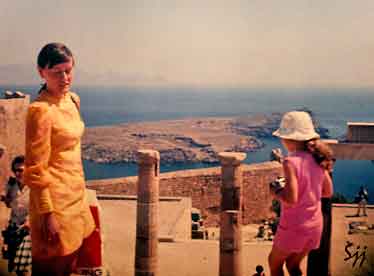
Lindos
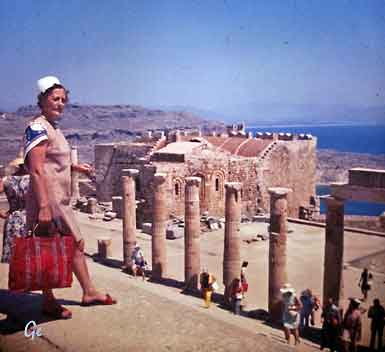
Lindos
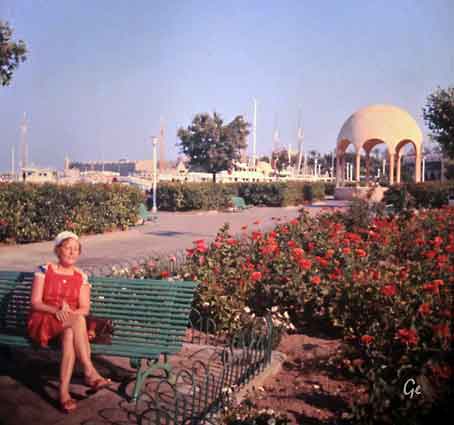
Rhodos by

Rhodos gamleby
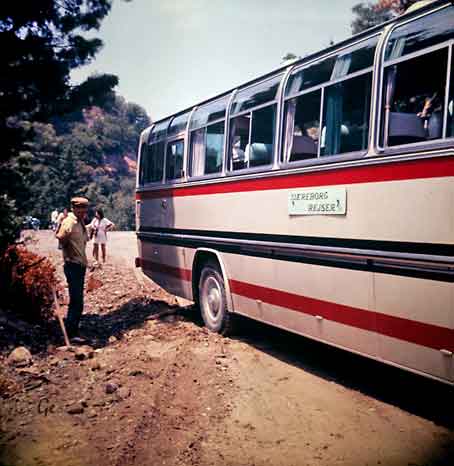
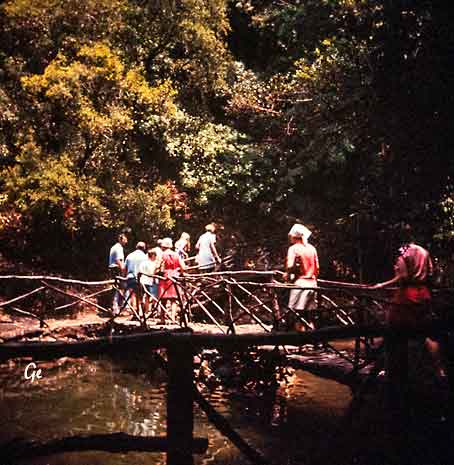
The Valley of the Butterflies (Petaloudes)
is another one of the landmarks of the island: the "Zitia"
tree, which is found in a few parts of the Mediterranean,
hosts millions of butterflies that peacefully hang in the
shadowy wet paths it creates with the brook, which
occasionally is transformed to lakes and small waterfalls.
During August, thousands of butterflies of the
genus Panaxia (species Quadripunctaria Poda) swarm into
the butterfly valley in order to reproduce.
period, the butterflies, still in the caterpillar stage, remain
in the Mediterranean thicket (arbutus, myrtle and rush)
feeding on the foliage.
As the end of the wet season approaches, towards the end of
May, the final stage is concluded and the butterfly in all her
perfection makes her appearance in the form recognizable
to us all. They move constantly towards areas with high
humidity, always following the "water ways", and as the dry
period progresses, they finally arrive at the valley.
Butterfly Valley (Valley of Butterflies, Petaloudes), Rhodes. Rhodes Travel Guide 2024, Photos, Activities, Maps. Things to do and places to visit in Rhodes - RhodesGuide.com (25. mars 2024)
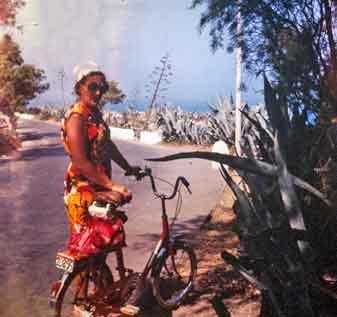
Vi tok en heldags sykkeltur rundt på øya
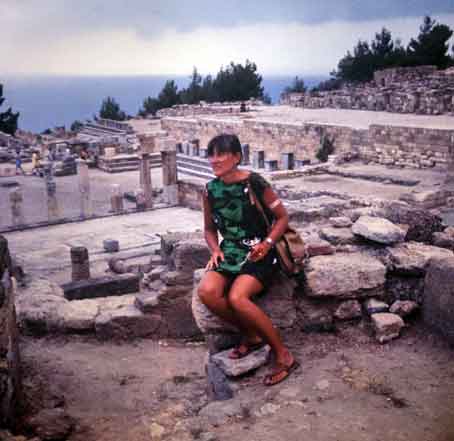
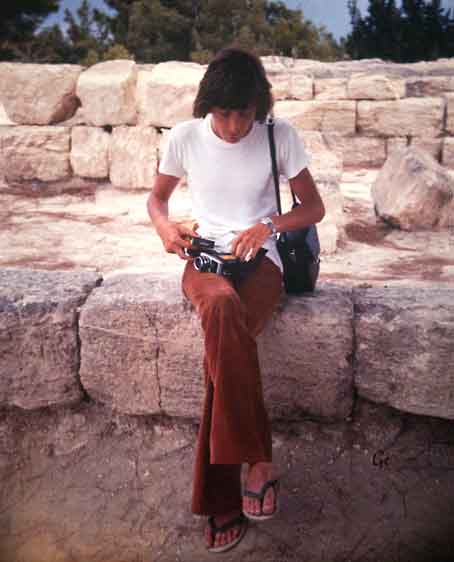
 Gretes handling på Rhodos |
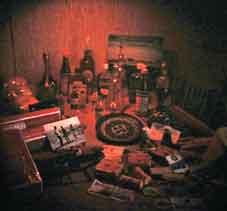
Dette handlet mor og Jan Erik